Lipertans 20/10/5 30s mg film-coated tablets
$59.30
Description
The instruction for medical use of Lipertans® medicine the Trade name of Lipertans® the International unlicensed name Is not present the Dosage form of the Tablet, film coated 10 mg / 5 mg / 5 Tablet mg, film coated, 20 mg / 5 mg / 5 Tablet mg, film coated, 20 mg / 10 mg / 5 Tablet mg, film coated, 20 mg / 10 mg / 10 Tablet mg, film coated, 40 mg / 10 mg / 10 mg Structure One tablet contains active agents: Tablets of 10 mg / 5 mg / 5 mg: 10.82 mg of an atorvastatin of calcium of trihydrate that is equivalent to 10 mg of an atorvastatin, 5 mg of a perindopril of arginine that corresponds 3.40 mg of a perindopril, and 6.94 mg of an amlodipin of the besilat that corresponds to 5 mg of an amlodipin of the Tablet of 20 mg / 5 mg / 5 mg: 21.64 mg of an atorvastatin of calcium of trihydrate that is equivalent to 20 mg of an atorvastatin, 5 mg of a perindopril of arginine that corresponds 3.40 mg of a perindopril, and 6.94 mg of an amlodipin of the besilat that corresponds to 5 mg of an amlodipin of the Tablet of 20 mg / 10 mg / 5 mg: 21.64 mg of an atorvastatin of calcium of trihydrate that is equivalent to 20 mg of an atorvastatin, 10 mg of a perindopril of arginine that corresponds 6.79 mg of a perindopril, and 6.94 mg of an amlodipin of the besilat that corresponds to 5 mg of an amlodipin of the Tablet of 20 mg / 10 mg / 10 mg: 21.64 mg of an atorvastatin of calcium of trihydrate that is equivalent to 20 mg of an atorvastatin, 10 mg of a perindopril of arginine that corresponds 6.79 mg of a perindopril, and 13.87 mg of an amlodipin of the besilat that corresponds to 10 mg of an amlodipin of the Tablet of 40 mg / 10 mg / 10 mg: 43.28 mg of an atorvastatin of calcium of trihydrate that is equivalent to 40 mg of an atorvastatin, 10 mg of a perindopril of arginine that corresponds 6.79 mg of a perindopril, and 13.87 mg of an amlodipin of the besilat that corresponds to 10 mg of an amlodipin excipients: lactoses monohydrate, calcium carbonate (E170), hydroxypropyl cellulose (E463), sodium krakhmalglikolat (type A), microcrystalline cellulose (E460), maltodextrin, magnesium stearate (E572) structure of a film cover: glycerin (E422), gipromelloz (E464), macrogoal 6000, magnesium stearate (E572), titan dioxide (E171), iron oxide yellow (E172) Description of Липертанс® 10/5/5 mg: tablets of round shape, film coated, yellow color, with an engraving 1 on one party of a tablet andon other party (for a dosage of 10/5/5 mg), Липертанс® 20/5/5 mg: tablets of round shape, film coated, yellow color, with an engraving 2 on one party of a tablet andon other party (for a dosage of 20/5/5 mg), Липертанс® 20/10/5 mg: tablets of square shape, film coated, yellow color, with an engraving 3 on one party of a tablet andon other party (for a dosage of 20/10/5 mg), Липертанс® 20/10/10 mg: tablets of an oval form, film coated, yellow color, with an engraving 4 on one party of a tablet andon other party (for a dosage 20/10/10 mg), Липертанс® 40/10/10 mg: tablets of an oval form, film coated, yellow color, with an engraving 5 on one party of a tablet andon other party (for a dosage of 40/10/10 mg) Pharmacotherapeutic group the Cardiovascular system. The lipid-modifying drugs. The lipid-modifying drugs, combinations. HMG-CoA-reductases inhibitors, combinations others. Atorvastatin, amlodipin also perindoprit. The Pharmacological Pharmacokinetics Joint Use properties of 40 mg of an atorvastatin, 10 mg of a perindopril of arginine and 10 mg of an amlodipin led the ATX C10BX11 code to increase in AUC of an atorvastatin for 23% that is not clinically significant. The maximum concentration of a perindopril increased approximately by 19%, but pharmacokinetic indicators of the perindoprilat, an active metabolite, did not change. Speed and extent of absorption of an amlodipin at the combined use with atorvastatiny and perindoprily significantly did not differ from speed and extent of absorption of an amlodipin at use as monotherapy. Atorvastatin Vsasyvaniye Atorvastatin is quickly soaked up after oral administration, the maximum concentration in plasma (Cmax) are reached in 1-2 hours. Extent of absorption raises in proportion to a dose of an atorvastatin. After oral administration of tablets of an atorvastatin, film coated, the bioavailability of drug is from 95% to 99% in comparison with solution for oral administration. The absolute bioavailability of an atorvastatin is about 12%, and system availability concerning inhibition A-reductases hydroxymethylglutaryl coenzyme makes about 30%. Low system availability is caused by presistemny clearance in a mucous membrane of digestive tract and/or presistemny metabolism in a liver. Distribution the Average volume of distribution of an atorvastatin makes about 381 l. Linking of an atorvastatin with proteins of plasma makes ≥ 98%. Biopreobrazovaniye Atorvastatin is metabolized with the participation of a cytochrome P450 3A4 isoenzyme to orto- and parahydroxylated derivatives and various products of beta oxidation. Except other ways, these products are metabolized further by a glyukuronirovaniye. Orto- and para-hydroxylated metabolites have inhibiting effect in the relation A-reductases hydroxymethylglutaryl coenzyme, equivalent to action of an atorvastatin. The inhibiting effect concerning GMG-KoA-reduktazy approximately is defined on 70% by activity of the circulating metabolites. Removal Atorvastatin is removed mainly with bile after hepatic and/or extrahepatic metabolism. However atorvastatin, obviously, is not exposed to the significant enterohepatic recirculation. At the person the average elimination half-life of an atorvastatin makes about 14 hours of plasma. Thanks to existence of active metabolites the inhibiting activity concerning GMG-KoA-reduktazy remains about 20-30 hours. Special categories of patients People of advanced age: elderly people have plasma concentration of an atorvastatin and its active metabolites above, than at adult patients of young age whereas indicators of lipidic exchange are comparable with indicators in populations of younger patients. Floor: concentration of an atorvastatin and its active metabolites at women and men are various (at women of Cmax value about 20% higher, and AUC about 10% lower). These distinctions have no clinical value, as a result clinically significant differences in indicators of lipidic exchange at men and women are absent. Renal failure: diseases of kidneys do not affect plasma concentration of an atorvastatin and its active metabolites or its influence on indicators of lipidic exchange. Liver failure: at patients with a chronic alcoholic liver disease (class B on Chayld-Pyyu) concentration of an atorvastatin are considerably increased (Cmax approximately by 16 times, AUC is about 11 times higher than norm). Polymorphism: SLOC1B1 Hepatic capture of all inhibitors of GMG-KoA-reduktazy, including atorvastatin, happens to participation of transport protein OATP1B1. Patients with polymorphism of SLCO1B1 have a risk of the increased influence of an atorvastatin that can result in the increased risk of developing a rhabdomyolysis. Polymorphism in the gene coding OATP1B1 (SLCO1B1 with. 521CC), is associated with increase in action of an atorvastatin by 2.4 times (AUC) in comparison with action at the persons which do not have this option of a genotype (with. 521TT). At these patients also perhaps genetic disorder of hepatic capture of an atorvastatin. Possible consequences concerning efficiency are unknown. Perindopril Vsasyvaniye At intake absorption of a perindopril occurs quickly, the maximum concentration is reached within 1 hour. The half-life period of a perindopril in plasma is 1 hour Biopreobrazovaniye Perindopril is pro-medicine. Twenty seven percent of the accepted dose of a perindopril come to a blood stream in the form of an active metabolite, the perindoprilat. Except the active perindoprilat, in an organism five more inactive metabolites are formed. Peak concentration of the perindoprilat in plasma is reached in 3-4 hours after administration of drug. Meal reduces transformation of a perindopril in perindoprilat, and, therefore, and its biological availability therefore perindoprit arginine it is recommended to accept orally once a day, in the morning to food. Linearity: it was shown that communication between a dose of a perindopril and its exposure in plasma is linear. Distribution: the volume of distribution of the untied perindoprilat is about 0.2 l/kg. Linking of the perindoprilat with proteins of plasma makes 20% and happens generally to angiotenzinkonvertiruyushchy enzyme, but depends on concentration of drug. Removal Perindoprilat is allocated with urine, final elimination half-life of its free fraction makes about 17 hours that allows to reach equilibrium state in 4 days. Special categories of patients People of advanced age: removal of the perindoprilat slows down at elderly patients and also at patients with a heart or renal failure. Patients with a renal failure: patients with a renal failure are recommended to carry out selection of a dose taking into account extent of disturbance of renal function (clearance of creatinine). At dialysis the clearance of the perindoprilat is 70 ml/min. Patients with cirrhosis. The kinetics of a perindopril changes at patients with cirrhosis: the hepatic clearance of an initial molecule decreases half. However the number of the formed perindoprilat does not decrease therefore dose adjustment is not required. Amlodipin: Absorption At oral administration of therapeutic doses amlodipin is soaked up well, the peak level of content in blood is reached in 6-12 hours after reception of a dose. By estimates, absolute biological availability makes 64-80%. Biological availability of an amlodipin does not depend on meal. Distribution the Volume of distribution makes about 21 l/kg. About 97.5% of the circulating amlodipin contact blood proteins. Biotransformation, removal Final plasma elimination half-life is about 35-50 hours and corresponds to reception of one dose in day. Amlodipin is intensively metabolized by a liver in inactive metabolites, 10% of initial connection and 60% of metabolites are removed with urine. Special categories of patients Patients with hepatic insufficiency: concerning purpose of an amlodipin the patients with a liver failure do not have enough clinical data. At patients with a liver failure the clearance of an amlodipin is reduced that leads to increase in elimination half-life and increase in AUC approximately by 40-60%. Elderly people: time before achievement of the maximum concentration of an amlodipin in plasma is similar at elderly and younger patients. At elderly patients the clarification of blood from an amlodipin tends to decrease that leads to increase in AUC and lengthening of elimination half-life. Increase in AUC and lengthening of elimination half-life at patients with stagnant heart failure were meeting expectations for the studied age group of patients. The pharmacodynamics the action Mechanism Atorvastatin Atorvastatin is a selective competitive inhibitor A-reductases hydroxymethylglutaryl coenzyme, speed – the limiting enzyme which is responsible for transformation of a 3-hydroxy-3-methyl-glutaryl-coenzyme And in mevalonat, a precursor of sterols, including cholesterol. Triglycerides and cholesterol in a liver are built in lipoproteins of very low density (LPONP) and are released in plasma for delivery to peripheral fabrics. The lipoprotein of the low density (LDL) is formed of LPONP and catabolizes generally through a receptor with high affinity to LDL (LDL receptor). Perindopril Perindopril is an inhibitor of enzyme which turns angiotensin I into angiotensin II (angiotenzinkonvertiruyushchy enzyme, AKF). The turning enzyme, or a kinase, is an ekzopeptidaza which catalyzes transformation of angiotensin I into vasoconstrictive angiotensin II and also causes transformation of vasodilating bradykinin into inactive heptapeptide. The inhibition of AKF leads to decrease in level of angiotensin II in plasma that causes increase in activity of renin in plasma (at the expense of inhibition of negative feedback of release of renin) and decrease in secretion of Aldosteronum. As AKF causes a bradykinin inactivation, AKF inhibition also leads to increase in activity of the circulating and local kallikrein-kinin system (and also to activation of a system of prostaglandins). It is possible that this mechanism matters in hypotensive influence of AKF inhibitors and is partially responsible for some of their side effects (cough). Perindopril acts through an active metabolite, perindoprilat. Other metabolites did not show inhibition of activity of AKF in vitro. Amlodipin Amlodipin represents the inhibitor of receipt of calcium ions through membranes belonging to group of dihydropyridine (a blocker of slow channels or the antagonist of calcium ions) and the inhibiting transmembrane current of calcium ions in a cardiac muscle and smooth muscles of vessels. Pharmakodinamichesky effect Atorvastatin Atorvastatin lowers concentration of cholesterol in plasma and concentration of lipoproteins in serum by oppression A-reductases hydroxymethylglutaryl coenzyme and the subsequent biosynthesis of cholesterol in a liver and also raises number of hepatic receptors of LDL on a cell surface for the strengthened capture and catabolism of LDL. Atorvastatin reduces production of LDL and number of particles of LDL. Atorvastatin causes substantial and continuous increase of activity of receptors of LDL and also favorable change of quality of the circulating LDL particles. Atorvastatin effectively reduces LDL cholesterol at patients with a family homozygous hypercholesterolemia — populations which usually do not respond to treatment with hypolipidemic drugs. Perindopril Gipertenziya Perindopril acts at all degrees of hypertensia: easy, moderate and heavy, decrease in systolic and diastolic arterial blood pressure in a dorsal decubitus is observed and standing. Perindopril reduces resistance of peripheral vessels that leads to a lowering of arterial pressure. As a result, the peripheral blood stream increases, without influencing heart rate. As a rule, the renal blood stream increases, at the same time the glomerular filtration rate (GFR) usually remains without changes. Heart failure Perindopril facilitates cardiac performance by reduction of preloading and an afterload of ventricles of heart. Amlodipin Mekhanizm of hypotensive action of an amlodipin consists in the direct weakening action on smooth muscles of vessels. The exact mechanism of action by means of which amlodipin reduces manifestations of stenocardia completely is not installed, but it is known that this drug reduces the general ischemic loading due to two effects: 1) Amlodipin expands peripheral arterioles and by that reduces the general peripheric resistance (afterload), reducing load of heart. As heart rate remains stable, this unloading of heart reduces energy consumption by a myocardium and oxygen requirement. 2) Mekhanizm of action of an amlodipin probably also includes expansion of the main coronary arteries and coronary arterioles both in normal, and in ischemic zones of a myocardium. This expansion leads to increase in delivery of oxygen to a myocardium at patients with a spasm of a coronary artery (Printsmetal’s stenocardia or alternative stenocardia). Atorvastatin Atorvastatin reduces concentration of the general cholesterol (30% – 46%), LDL cholesterol (41% – 61%), apolipoprotein B (34% – 50%) and triglycerides (14% – 33%), causing at the same time variable increase in concentration of LPVP cholesterol and A1 apolipoprotein. These results are comparable at patients to a family heterozygous hypercholesterolemia, single forms of a hypercholesterolemia and the mixed lipidemia, including patients with non-insulin-dependent diabetes mellitus. It was proved that decrease in level of the general cholesterol, LDL cholesterol and apolipoproteins B reduces risk of emergence of the cardiovascular phenomena and death from cardiovascular diseases. The family homozygous hypercholesterolemia At patients average percentage decrease in level of LDL cholesterol makes about 20%. Prevention of cardiovascular diseases At use of a combination of an atorvastatin and amlodipin is observed considerable decrease in number of the events which are the main final t
chky — lethal coronary attacks and non-lethal myocardial infarctions. Perindopril Gipertenziya Hypotensive action reaches a maximum during from 4 to 6 hours after reception of a single dose and remains within not less than 24 hours, the residual effect is about 87-100% of peak effect. The lowering of arterial pressure occurs quickly. At the patients showing the answer, normalization is reached within a month and remains without approach of a tachyphylaxis. The termination of treatment does not lead to effect of a ricochet. Perindopril reduces a hypertrophy of a left ventricle. It was confirmed that at men perindoprit shows vasodilating properties. It improves elasticity of arteries and reduces a ratio of media – a gleam in small arteries. Additional therapy by thiazide diuretic has additive synergy effect. The combination of AKF inhibitor and a tiazid also reduces risk of the hypopotassemia caused by treatment by diuretics. Patients with stable coronary heart disease: Combinations with perindoprily lead to absolute significant decrease in the compound criterion including cordial sosudistuyusmert, not fatal myocardial infarction and/or cardiac arrest with successful resuscitation. Amlodipin: At patients with hypertensia one dose a day provides clinically significant lowering of arterial pressure, both in a dorsal decubitus, and in a standing position, during all interval at 24 o’clock. Because of the slowed-down beginning of action the acute hypotension is not inherent to reception of an amlodipin. At patients with stenocardia the daily reception of an amlodipin increases the general duration of loading, time before stenocardia and time to appearance of a depression of a segment of ST for 1 mm once a day and also reduces the frequency of attacks of stenocardia and the use of tablets of glyceride of trinitrate. Amlodipin is not connected with any side metabolic effects and with changes of lipids of plasma, and is suitable for patients with asthma, diabetes and gout. Use for patients with the coronary heart disease (CHD): Treatment amlodipiny is connected with smaller number of cases of hospitalization concerning stenocardia and procedures of revascularization at patients with an ischemic heart disease. Pediatric population Data on impact of Lipertansa® on children are absent. Indications – for treatment of essential hypertensia and/or stable coronary heart disease, in connection with primary hypercholesterolemia or the mixed lipidemia as replacement therapy at adult patients whose condition is adequately controlled by means of an atorvastatin, a perindopril and an amlodipin at simultaneous use in the same dose, as well as in the combined drug. Route of administration and doses Oral administration. The pill Lipertansa® should be taken in a single dose daily once a day in the morning before food. The dosing mode the Usual dose — 1 tablet once a day daily. The combination of the fixed doses is not suitable for initial therapy. If it is required to change the dosing mode, it is necessary to titrate separate components. Patients with a renal failure of Lipertans® patients at whom the clearance of creatinine is ³ 60 ml/min. can accept, but it is not suitable for patients with clearance of creatinine & lt, 60 ml/min. For these patients the individual titration of doses of monocomponents is recommended. Patients of advanced age Patients of advanced age can be treated by Lipertansom® depending on function of kidneys. Patients with a liver failure of Lipertans® it is necessary to apply with care at patients with an abnormal liver function. Липертанс® it is contraindicated to patients with a liver disease in an active stage. Children and teenagers Safety and efficiency of Lipertansa® at children and teenagers is not studied. Data are absent. Therefore use of drug for children and teenagers is not recommended. Side effects safety profile Summary at separate reception of an atorvastatin, perindopril and amlodipin belong To the most widespread undesirable reactions: a nasopharyngitis, allergic reactions, a hyperglycemia, a headache, pharyngolaryngeal pain, bleeding from a nose, a constipation, a meteorism, dyspepsia, nausea, diarrhea, myalgia, an arthralgia, extremity pain, muscular spasms, hypostasis of joints, a dorsodynia, deviations of results of hepatic tests, increase in level of a creatine kinase in blood, drowsiness, dizziness, heart consciousness, hyperaemia, an abdominal pain, peripheral hypostasis, fatigue, paresthesia, a disorder of vision, a ring in ears, hypotension, cough, short wind, vomiting, a dysgeusia, rash, an itching, muscular spasms, an asthenia. Very often (& gt, 1/10), it is frequent (& gt, 1/100, & lt, 1/10), infrequently (& gt, 1/1000, & lt, 1/100), is rare (& gt, 1/10000, & lt, 1/1000), is very rare (& gt, 1/10000), frequency is not established (on the basis of the available data it is not possible to carry out the development frequency assessment). Very often – Hypostasis Often – the Nasopharyngitis – Hypersensitivity – the Hyperglycemia – Dizziness, a headache, a tremor, a dysgeusia, paresthesia – Disorders of vision, a diplopia – the Ring in ears, vertigo – Heart consciousness – Hypotension (and the effects connected with hypotension), reddening – Pharyngolaryngeal pain, bleeding from a nose, cough, short wind – Nausea, vomiting, pain at the top of and in the bottom of a stomach, dyspepsia, diarrhea, a constipation, change of a rhythm of defecation, a meteorism – Rash, an itching – Hypostasis of joints, hypostasis of anklebones, extremity pain, an arthralgia, muscular spasms, myalgia, a dorsodynia – the Gynecomastia – the Asthenia, fatigue – the Deviation of indicators of functional trials of a liver, increase in level of a creatine kinase in blood Infrequently – Rhinitis – the Eosinophilia – the Hypoglycemia, a hyponatremia, a hyperpotassemia reversible after drug withdrawal, anorexia – Insomnia, changes of mood (including alarm), sleep disorder, a depression, dreadful dreams – the Faint, a hypesthesia, amnesia – Indistinct sight – Arrhythmia (including bradycardia, ventricular tachycardia and fibrillation of auricles) – Tachycardia – the Vasculitis – the Bronchospasm – Dryness in a mouth, pancreatitis, an eructation – Hepatitis, cytolytic or cholestatic, – Urticaria, a purpura, discoloration of skin, a hyperhidrosis, a dieback, the Alopecia, a Quincke’s edema, pemphigoid, reaction of photosensitivity – neck Pain, Muscular fatigue – urination Disturbance, a nocturia, a pollakiuria, a renal failure, erectile dysfunction – the Stethalgia, pain, an indisposition, peripheral hypostasis, fever – Increase in level of urea in blood, increase in level of creatinine in blood, increase in body weight, leukocytes in urine, decrease in body weight – Falling Is rare – Thrombocytopenia – Confusion of consciousness – Peripheral neuropathy – the Cholestasia – Exacerbation of psoriasis, Stephens-Johnson’s Syndrome, a toxic epidermal necrolysis, a polymorphic erythema – the Myopathy, a miositis, a rhabdomyolysis, a tendinopatiya sometimes complicated by a gap – Increase in level of liver enzymes, increase in level of bilirubin in blood is Very rare – the Leukopenia/neutropenia, an agranulocytosis or a pancytopenia, hemolytic anemia at patients with congenital insufficiency of G-6PDH, – the Anaphylaxis – the Hypertension – the Stroke which is perhaps caused by excessive decrease in the ABP in patients of risk group – the Hearing loss – the myocardial infarction caused by the profound hypotension in patients of group of high risk, stenocardia – Eosinophilic pneumonia – Gastritis, a hypertrophic ulitis – Jaundice, a liver failure – Exfoliative dermatitis – the Acute renal failure, – Decrease in level of hemoglobin and a hematocrit Frequency is not established – Extrapyramidal disorders (extrapyramidal syndrome) – the Immunomediated necrotizing myopathy At reception of an amlodipin were noted exceptional cases of an extrapyramidal syndrome. As well as in case of other inhibitors A-reductases hydroxymethylglutaryl coenzyme, at the patients accepting atorvastatin the increased levels of transaminases in serum were noted. These changes usually were minor and passing and did not demand treatment interruption. Clinically significant (& gt, 3 times are higher than the upper bound of norm) increases in levels of transaminases in serum took place at 0.8% of the patients accepting atorvastatin. All patients had dose-dependent and reversible these increases. The norms increased serumal levels of a creatine kinase (KK) more than 3 times higher than the upper bound were noted at 2.5% of the patients accepting atorvastatin similar to other inhibitors A-reductases hydroxymethylglutaryl coenzyme in clinical trials. Levels, more than by 10 times exceeding the upper bound were noted at 0.4% of the patients treated atorvastatiny. The following undesirable phenomena were noted at use of some statines: • Disturbance of sexual function. • Depression. • Exceptional cases of an interstitial pulmonary disease, especially at long-term treatment. • Diabetes: frequency depends on existence or lack of risk factors (glucose level in blood on an empty stomach ≥ 5.6 mmol/l, BMI & gt, 30 kg/sq.m, the increased level of triglycerides, hypertensia in the anamnesis). Cases of the Syndrome of Inadequate Secretion of Antidiuretic Hormone (SISAH) were reported with other AKF inhibitors. SNSAG can be considered as very rare, but possible complication connected with therapy by AKF inhibitor, including perindoprily. Contraindications – hypersensitivity to active ingredient, to the AKF inhibitors derivative of dihydropyridine, statines or to one of excipients – a liver disease in an active stage or steady increase in level of transaminases in serum of not clear genesis are more than 3 times higher than the upper bound of norm – pregnancy, feeding by a breast and use for the women capable to birth and not applying effective remedies of contraception – heavy hypotension – shock (including cardiogenic shock). – obstruction of an output path of a left ventricle (for example, a hypertrophic subaortic stenosis and a stenosis of an aorta of high degree) – hemodynamically unstable heart failure after an acute myocardial infarction – existence in the anamnesis of the Quincke’s edema connected with the previous treatment by AKF inhibitors – a hereditary or idiopathic Quincke’s edema – simultaneous use of the drugs containing aliskiren for patients with diabetes or a renal failure (SKF & lt, 60 ml/min. / 1.73 m ²) – Simultaneous use with sakubitrilom/valsartany – the Extracorporal treatments leading to contact of blood with negatively charged surfaces – the Significant bilateral renal artery stenosis or a stenosis of an artery in the only functioning kidney – to Persons with hereditary intolerance of fructose, deficiency of Lapp-lactases enzyme, glucose galactose malabsorption Medicinal interactions Double blockade the system renin-angiotensin-aldosteronovoy (SRAA) by the combined use of AKF inhibitors, blockers of receptors of angiotensin II or an aliskiren is followed by increase in frequency of the undesirable phenomena, such as hypotension, hyperpotassemia and depression of function of kidneys (including development of an acute renal failure) in comparison with use of one drug influencing RAAS. Researches of medicinal interaction Lipertansa® with other drugs were not conducted, however researches with atorvastatiny, perindoprily and amlodipiny were conducted at separate reception. The drugs causing a hyperpotassemia Some drugs or classes of drugs can increase the frequency of emergence of a hyperpotassemia: aliskiren, potassium salts, kaliysberegayushchy diuretics, AKF inhibitors, antagonists of receptors of angiotensin-II, NPVS, heparins, immunodepressants, for example, cyclosporine or takrolimus, Trimethoprimum. The combination of these drugs increases risk of a hyperpotassemia. Simultaneous use is contraindicated Perindopril Aliskiren: the combined therapy of Lipertansom® and aliskireny is contraindicated to patients with diabetes or a renal failure (SKF & lt, 60 ml/min. / 1.73 m ²) because of risk of a hyperpotassemia, deterioration in function of kidneys and increase in frequency of cardiovascular diseases and death from cardiovascular diseases. Extracorporal treatments: The extracorporal treatments leading to contact of blood with negatively charged surfaces, such as dialysis or haemo filtration with certain membranes with high hydraulic permeability (for example, poliakrilnitrilny membranes) and aferez lipoproteins of low density a dextran sulfate in view of the increased risk of emergence of heavy anaphylactoid reactions. If such treatment is required, then it is necessary to take use of other type of a dialysis membrane or other class of hypotensive drug into account. Sakubitril/valsartan: Simultaneous use of a perindopril with sakubitrilom/valsartany is contraindicated as simultaneous inhibition of a neprilizin and AKF can increase risk of emergence of an angioedema. Reception of a sakubitrila/valsartan cannot be begun till 36 o’clock after reception of the last dose of therapy perindoprily. Therapy perindoprily cannot be begun till 36 o’clock after reception of the last dose of a sakubitrila/valsartan. Simultaneous use is not recommended Atorvastatin Powerful CYP3A4 inhibitors: Atorvastatin is metabolized by P450 3A4 cytochrome (CYP3A4) and is substrate of transport proteins, for example, of the transport protein OATP1B1 participating in hepatic capture. The concomitant use of the drugs which are CYP3A4 inhibitors or transport proteins can lead to increase in concentration of an atorvastatin in plasma and to the increased risk of a myopathy. The risk can also increase at a concomitant use of an atorvastatin with other drugs which can potentially cause a myopathy, such as derivatives of fibroyevy acid and ezetimib. It was proved that powerful CYP3A4 inhibitors lead to the significant increase in concentration of an atorvastatin. Whenever possible it is necessary to avoid a concomitant use of powerful CYP3A4 inhibitors (such as cyclosporine, telitromitsin, klaritromitsin, delavirdin, stiripentol, ketokonazol, vorikonazol, itrakonazol, posakonazol and HIV protease inhibitors, vk
to Develop





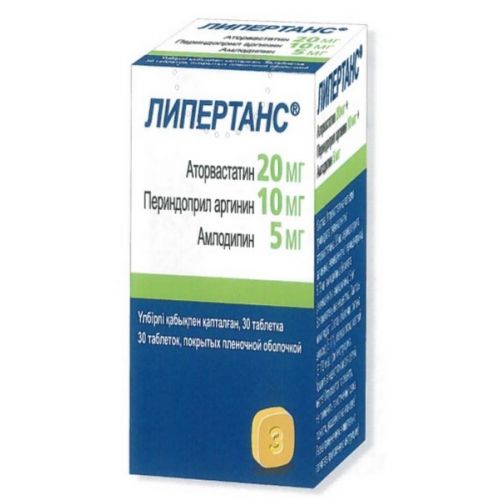
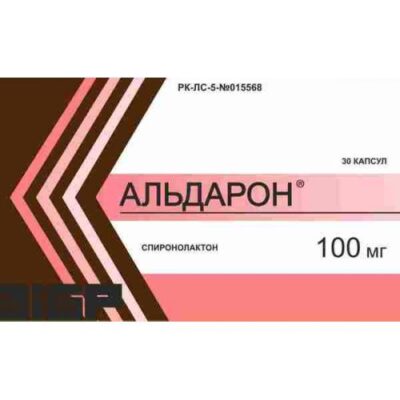
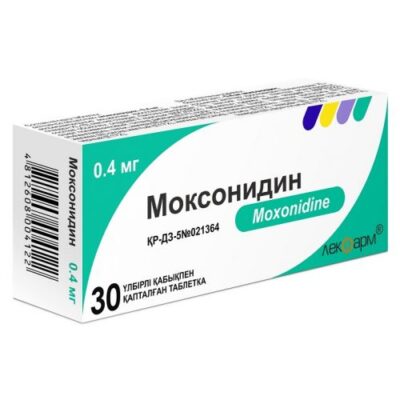
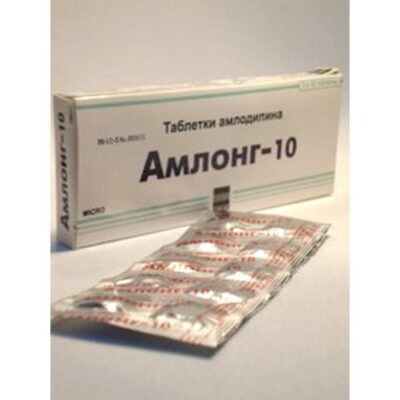
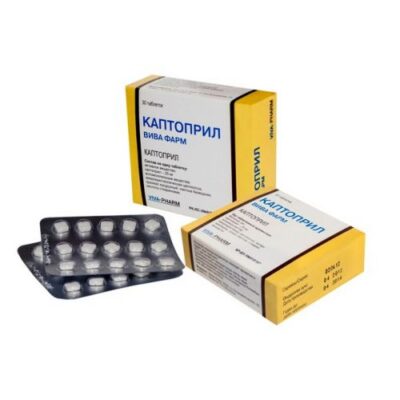
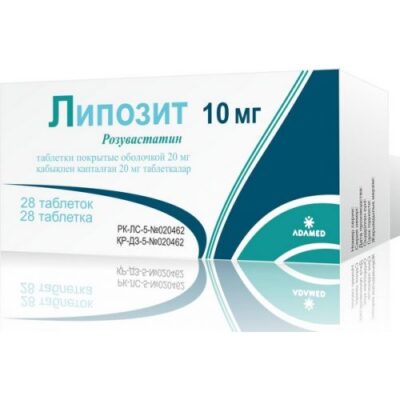
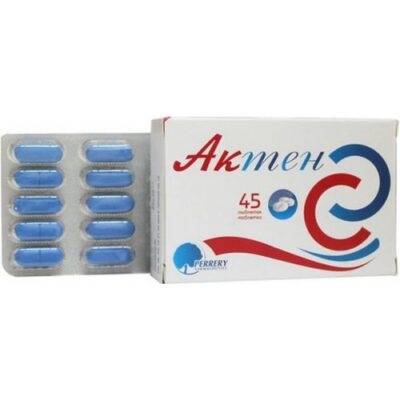

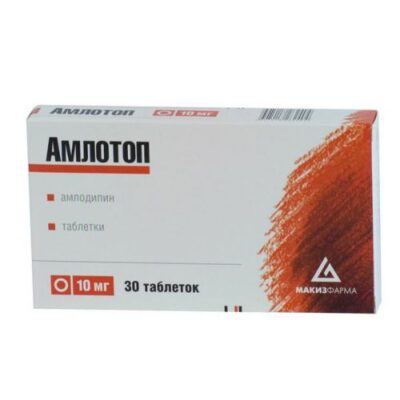
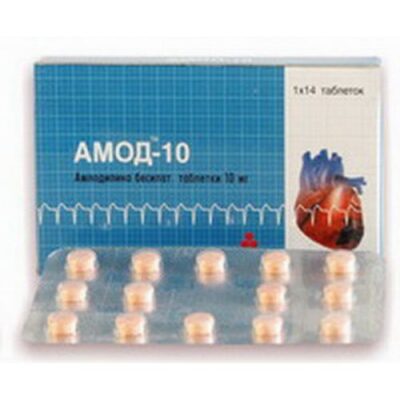
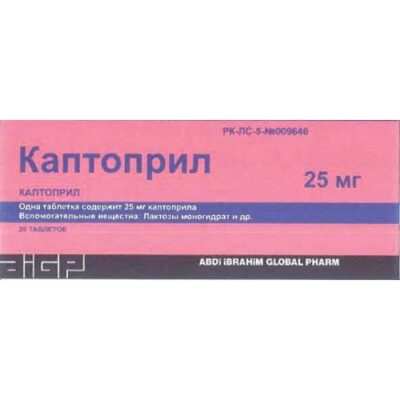






Reviews
There are no reviews yet.